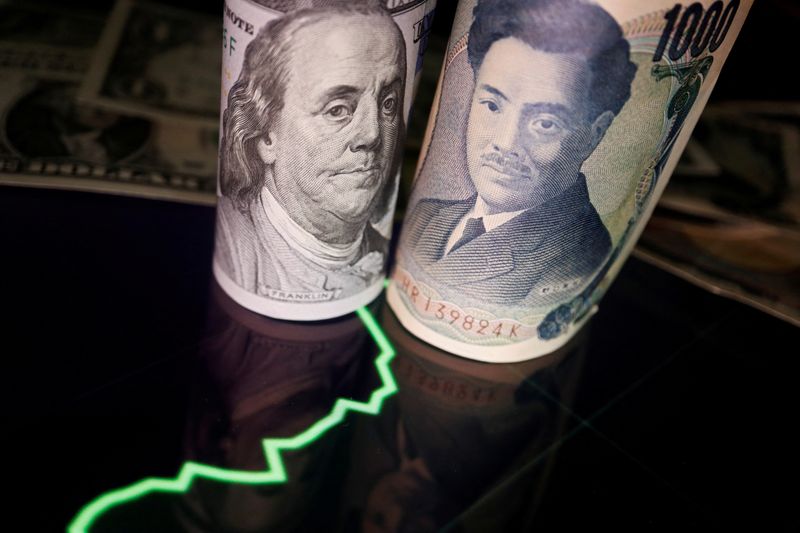By Rae Wee, Junko Fujita and Joice Alves
SINGAPORE/LONDON (Reuters) - The yen jumped on Monday as comments from Bank of Japan (BOJ) Governor Kazuo Ueda stoked hopes that Japan could soon herald a new era away from negative rates, while the dollar slid ahead of this week's key U.S. inflation reading.
The greenback tumbled ahead of U.S. inflation data due on Wednesday, with traders on the lookout for whether the world's largest economy is indeed on track for a "soft landing", and whether the Federal Reserve has further to go in raising rates.
The Japanese currency strengthened 1.2% to 146.06 per dollar, after touching its highest since Sept 1, boosted by weekend comments from Ueda that the central bank could end its negative interest rate policy when achievement of its 2% inflation target is in sight.
Ueda told the Yomiuri newspaper in an interview that the BOJ could have enough data by year-end to determine whether it can end negative rates.
The yen has come under pressure against the dollar as a result of growing interest rate differentials with the United States since the Federal Reserve began its aggressive rate-hike cycle last year while the BOJ remains a dovish outlier.
"It seems that Ueda's comments were intended to stop the yen's slide against the dollar," said Takehiko Masuzawa, trading head at Phillip Securities Japan. "His comments are working almost the same as government intervention."
Since the yen weakened past the 145 per dollar threshold last month, traders have been on alert for any signs of intervention from Japan to shore up the currency. A year ago, that level prompted the first yen-buying intervention by the authorities since 1998.
DOLLAR SLIDE
The dollar index, which measures the U.S. currency against peers including the yen, was last down 0.26% to 104.59, near an almost one-week low. Last week, it capped eight straight weeks of gains.
Against the dollar, sterling jumped 0.4% to stand at $1.2518, distancing itself from a three-month low hit last week.
The euro similarly gained 0.3% to $1.0731, after having ended Friday with an eight-week losing streak.
The greenback, along with U.S. Treasury yields, had surged last week after a run of resilient economic data added to bets that further rate hikes from the Fed may be on the horizon.
Whether the dollar will stay under pressure this week depends on the dollar’s reaction to its own domestic drivers, ING strategist Francesco Pesole said in a note.
Against the weaker U.S. dollar, the Aussie and the New Zealand dollar were among the biggest beneficiaries, each rising around 1%, while also benefiting from yuan strength.
The two antipodean currencies are often used as liquid proxies for the Chinese yuan.
TURN OF TIDE?
China's onshore yuan pulled away from Friday's 16-year low after the central bank on Monday set the daily midpoint guidance with the strongest bias on record, signalling increasing discomfort with the currency's recent weakness.
It was last nearly 0.8% higher at 7.2895 per dollar, while its offshore counterpart similarly was up about 0.9% to 7.3003 per dollar.
China's consumer prices returned to positive territory in August while factory-gate price declines slowed, data over the weekend showed, pointing to easing deflationary pressures amid signs of stabilisation in the economy.

"Historically, we do not see China's inflation print negative numbers for very long, although I thought we might at least get a few more deflationary figures than the single one served," said Matt Simpson, senior market analyst at City Index.
Separate data on Monday showed that Chinese banks extended 1.36 trillion yuan ($186.18 billion) in new yuan loans in August, up sharply from July and beating analyst expectations.